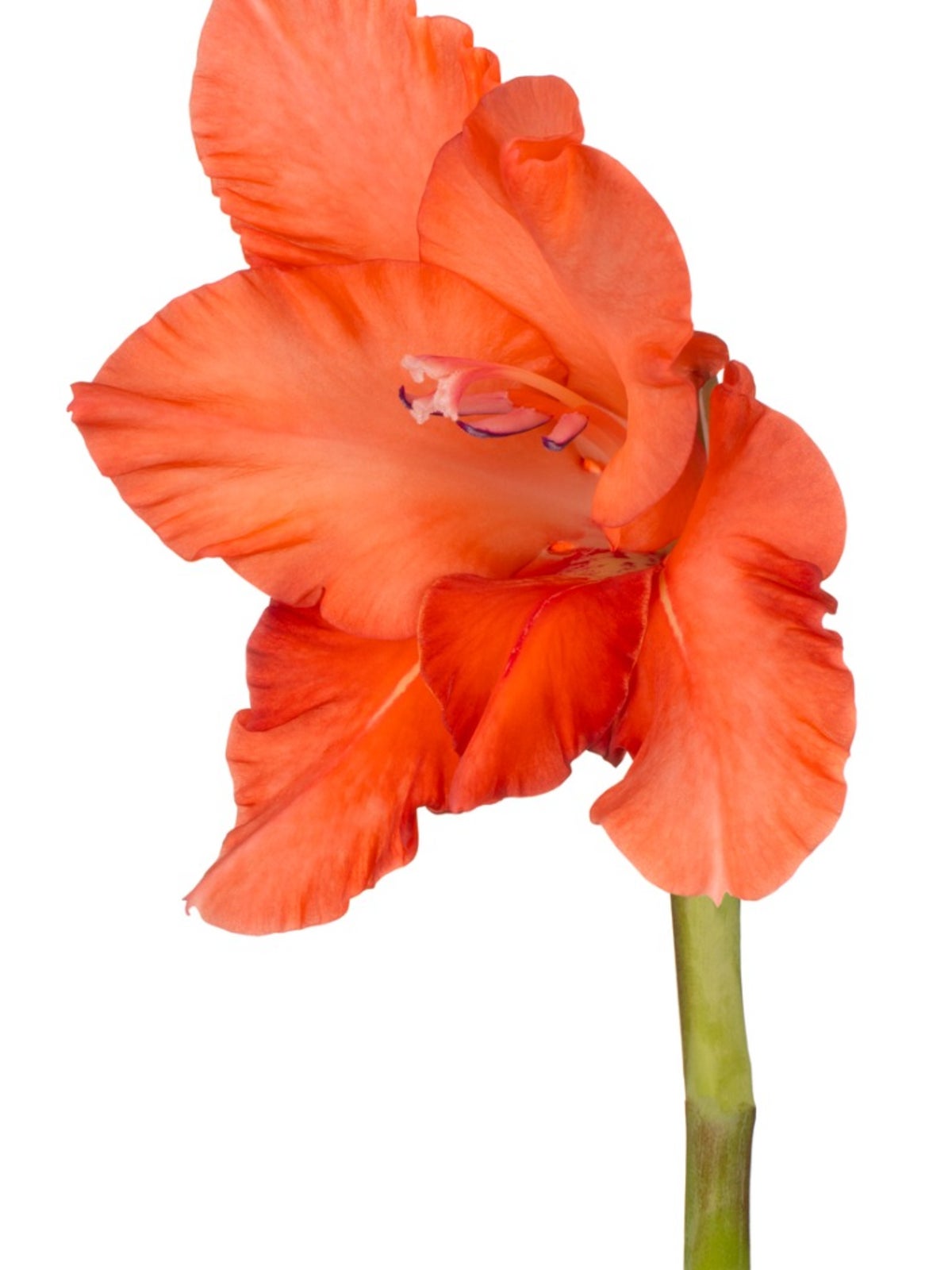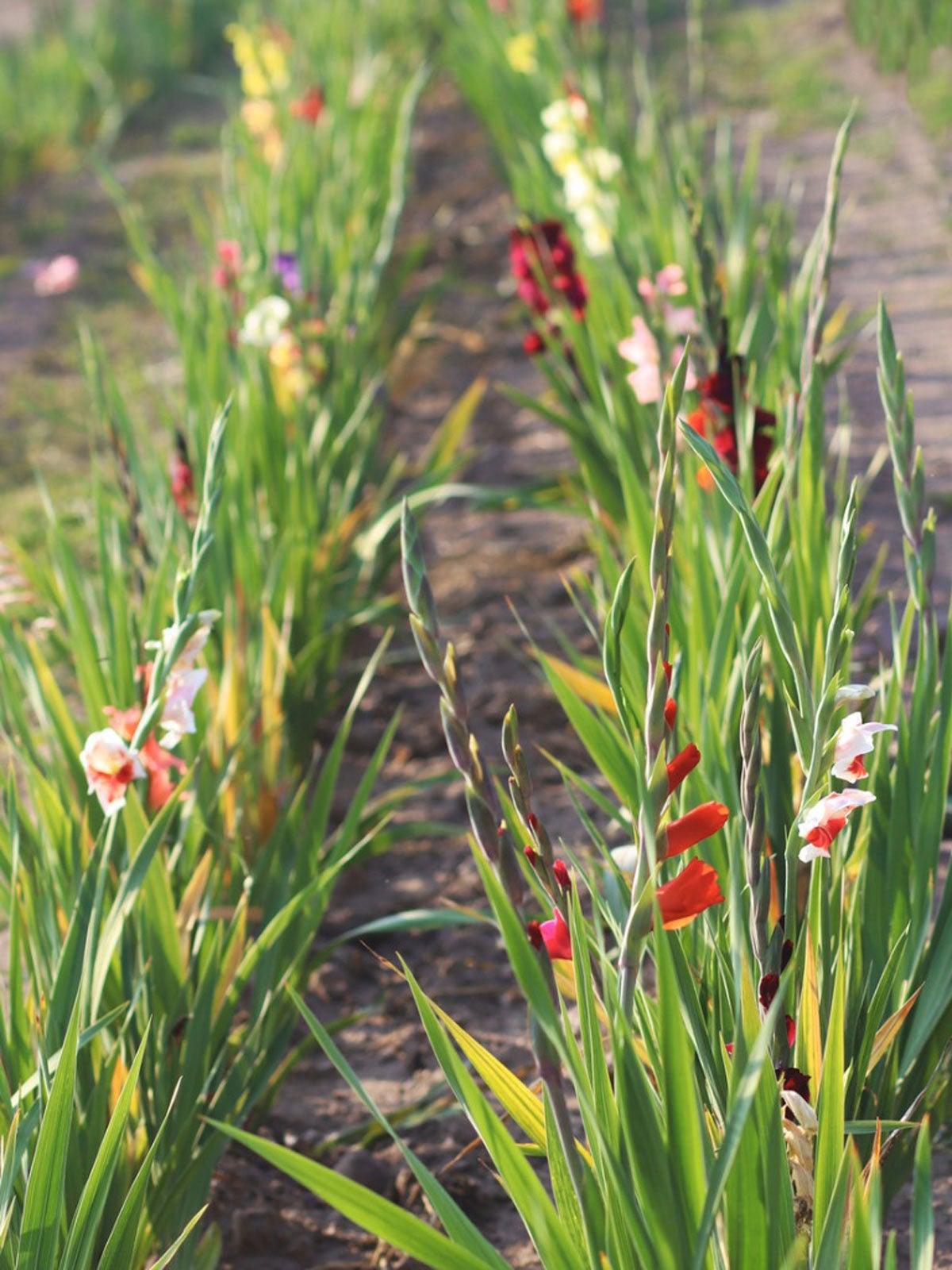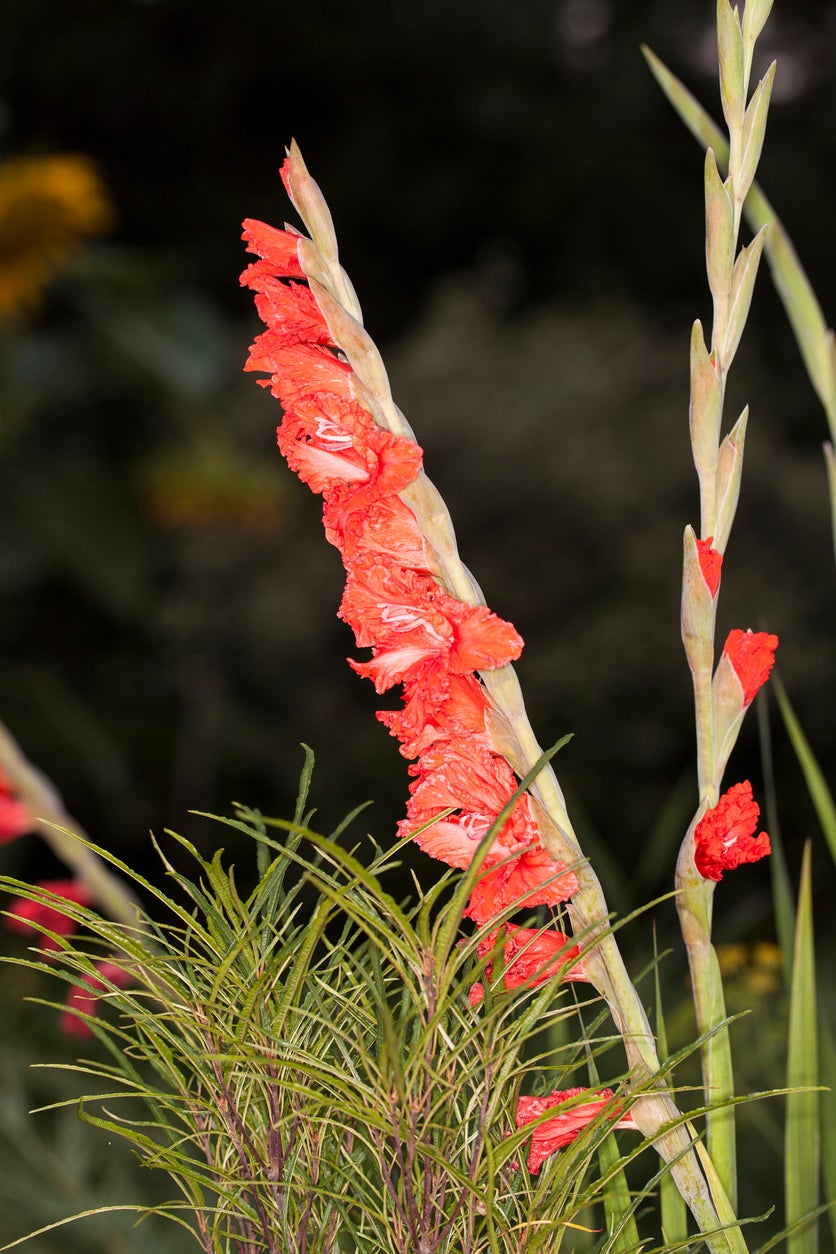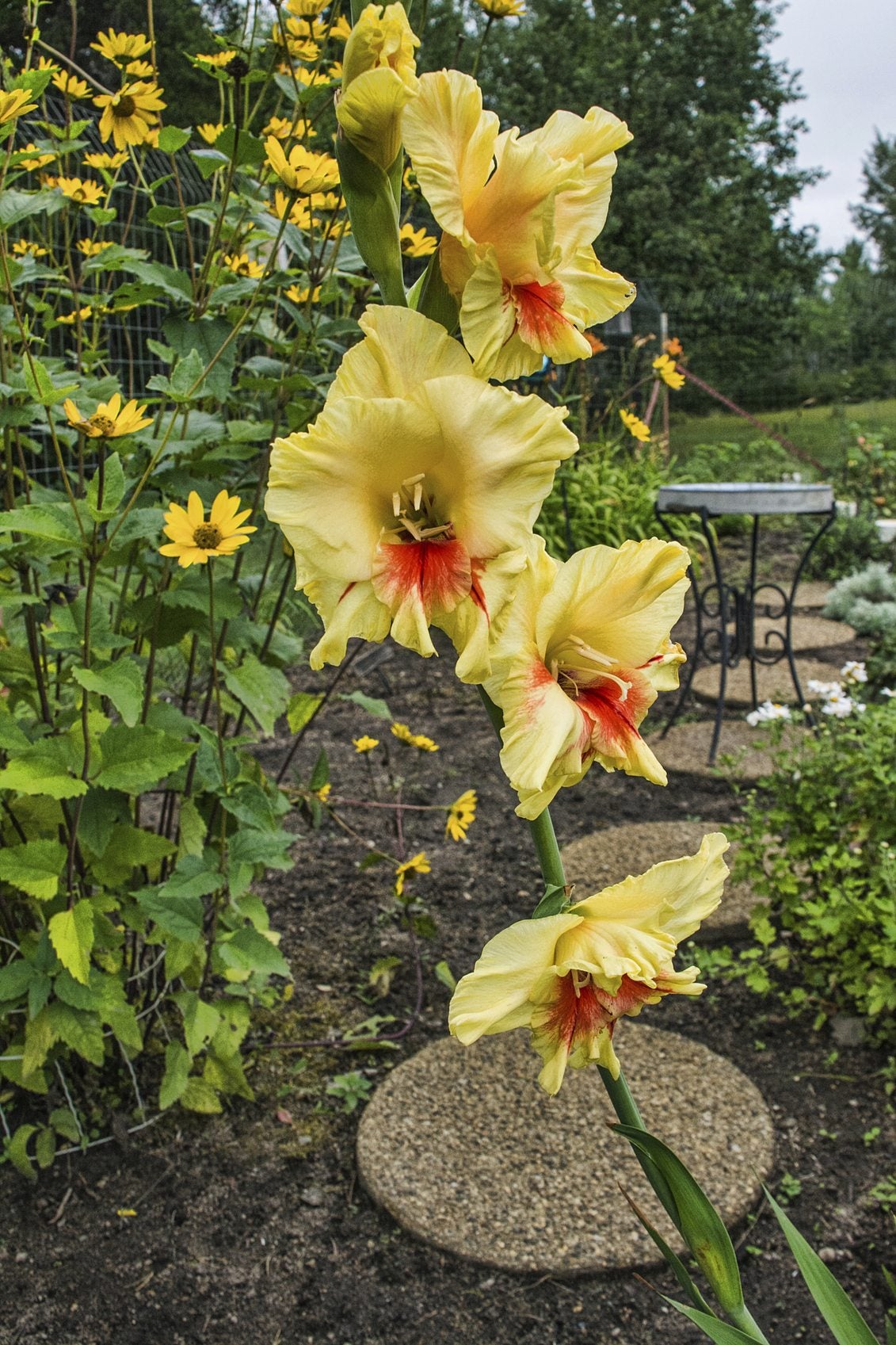How To Start Gladiolus Early Indoors


Gladiolus are a delightful addition to the summer garden, but many gardeners wish that they could get their gladiolus to bloom early so that they can enjoy the beauty longer. Little do most know, you can actually start gladiolus indoors in pots early, just like you may do with your vegetable plants.
Steps to Starting Gladiolus Early Indoors
You can start your gladiolus corms indoors about four weeks before your last frost date. Gladiolus can be started in either soil or water. Which method you use for starting your gladiolus early is up to you.
Starting Gladiolus Early in Water
Depending on how many gladiolus you have to start, choose either a shallow bowl or some other flat container that will hold a small amount of water and all of the gladiolus corms spread out. Fill the container with water to the depth of 1/4 inch (6 mm.). The water should just be deep enough to cover the base of the gladiolus corms. Place the gladiolus corms into the water, with the pointed end up and the scarred side down. Place the gladiolus corms and the container in bright, indirect light.
Starting Gladiolus Early in Soil
Gladiolus can also be started early in soil. Fill a container with 4 to 5 inches (10-13 cm.) of potting soil. Press the gladiolus corm into the soil pointy side up so that only half of the corm is in the soil. Water the soil and gladiolus corms so that the soil is damp, but not soaked. Keep the soil damp while the gladiolus are indoors. Place the container of gladiolus corms in a location with bright, indirect light.
Planting Sprouted Gladiolus Corms Outside
After your last frost date you can plant your sprouted gladiolus outside. Choose a location for the gladiolus that is well drained and has plenty of light. If the sprouted leaves on the gladiolus are under 5 inches (13 cm.) tall, bury the corm deep enough to also cover the sprouted leaf. Be careful not to break the sprout while you are covering it. If the sprout breaks, the gladiolus will not grow. If the sprout on the gladiolus corm is longer than 5 inches (13 cm.), bury the gladiolus corm 5 inches (13 cm.) deep and allow the rest of the gladiolus sprout to poke up above the ground. Starting your gladiolus corms indoors a little early is a great way to get a jump start on the season. By starting gladiolus indoors, you can be enjoying lovely gladiolus flowers when your neighbors still only have leaves.
Gardening tips, videos, info and more delivered right to your inbox!
Sign up for the Gardening Know How newsletter today and receive a free copy of our e-book "How to Grow Delicious Tomatoes".

Heather Rhoades founded Gardening Know How in 2007. She holds degrees from Cleveland State University and Northern Kentucky University. She is an avid gardener with a passion for community, and is a recipient of the Master Gardeners of Ohio Lifetime Achievement Award.
-
 8 Noteworthy Native Azaleas Every Gardener Should Know – And Grow!
8 Noteworthy Native Azaleas Every Gardener Should Know – And Grow!Native azaleas offer brilliant blooms in a range of colors and sizes. Here are a few favorites to get inspired and start working on a native shade garden!
-
 Growing Climbing Roses: How To Create Elegant Displays With Maximum Blooms
Growing Climbing Roses: How To Create Elegant Displays With Maximum BloomsMaster the art of growing stunning climbing roses with this essential guide to creating vibrant, fragrant walls and structures all summer long.
-
 Gladiolus Plants With Scab – Controlling Gladiolus Scab On Corms
Gladiolus Plants With Scab – Controlling Gladiolus Scab On CormsIf you are growing gladioli, you’ll want to know about gladiolus scab. For more information and tips on prevention and control, click here.
-
Gladioli Mosaic Virus – Managing Symptoms Of Gladiolus Mosaic
Gladiolus blooms are featured in many cutting gardens for mid-summer bouquets. When issues like mosaic occur, this can naturally be alarming. Good cultural control can help prevent mosaic virus in gladiolus. Learn more in this article.
-
 Botrytis On Gladiolus Plants: How To Control Gladiolus Botrytis Blight
Botrytis On Gladiolus Plants: How To Control Gladiolus Botrytis BlightGladiolus botrytis diseases are not uncommon, so knowing the signs and how to manage them is important. Learn about gladiolus blight here.
-
Treating Glads With Fusarium: How To Control Gladiolus Fusarium Rot
If the corms of your unplanted glads appear discolored and unhealthy, they may be infected with gladiolus fusarium rot. Learn more about fusarium wilt and rot on gladiolus plants in this article to see if your corms can be saved.
-
Gladiolus Leaf Diseases: What Causes Leaf Spots On Gladiolus Plants
When kept healthy and disease free, gladiolus plants will return year after year. Issues like gladiolus leaf spot, however, may cause decline of your plants. Becoming familiar with the signs of gladiolus leaf diseases is important in preventing spread. Learn more here.
-
 Is Your Gladiolus Falling Over – How To Stake Glads In The Garden
Is Your Gladiolus Falling Over – How To Stake Glads In The GardenGrowing glads is so simple, but sometimes the tall gladiolus falling over in the garden can be troublesome, if not unattractive. Luckily, with a little added support, this can be easily remedied. Click this article for additional information.
-
 Gladiolus Are Falling Over – Learn About Staking Gladiolus Plants
Gladiolus Are Falling Over – Learn About Staking Gladiolus PlantsProlific bloomers they are, but gladiolus plants falling over is not uncommon. Staking gladiolus plants will keep their brightly colored heads from dipping or breaking, and there are any number of items that can be used as gladiolus plant stakes. Learn more here.
-
 Companion Planting With Gladiolus: Plants That Grow Well With Gladiolus
Companion Planting With Gladiolus: Plants That Grow Well With GladiolusAs well as bouquets, gladiolus looks amazing in flower beds and along garden borders. But what are some good companion plants for gladiolus? Click this article to learn more about plants that grow well with gladiolus.